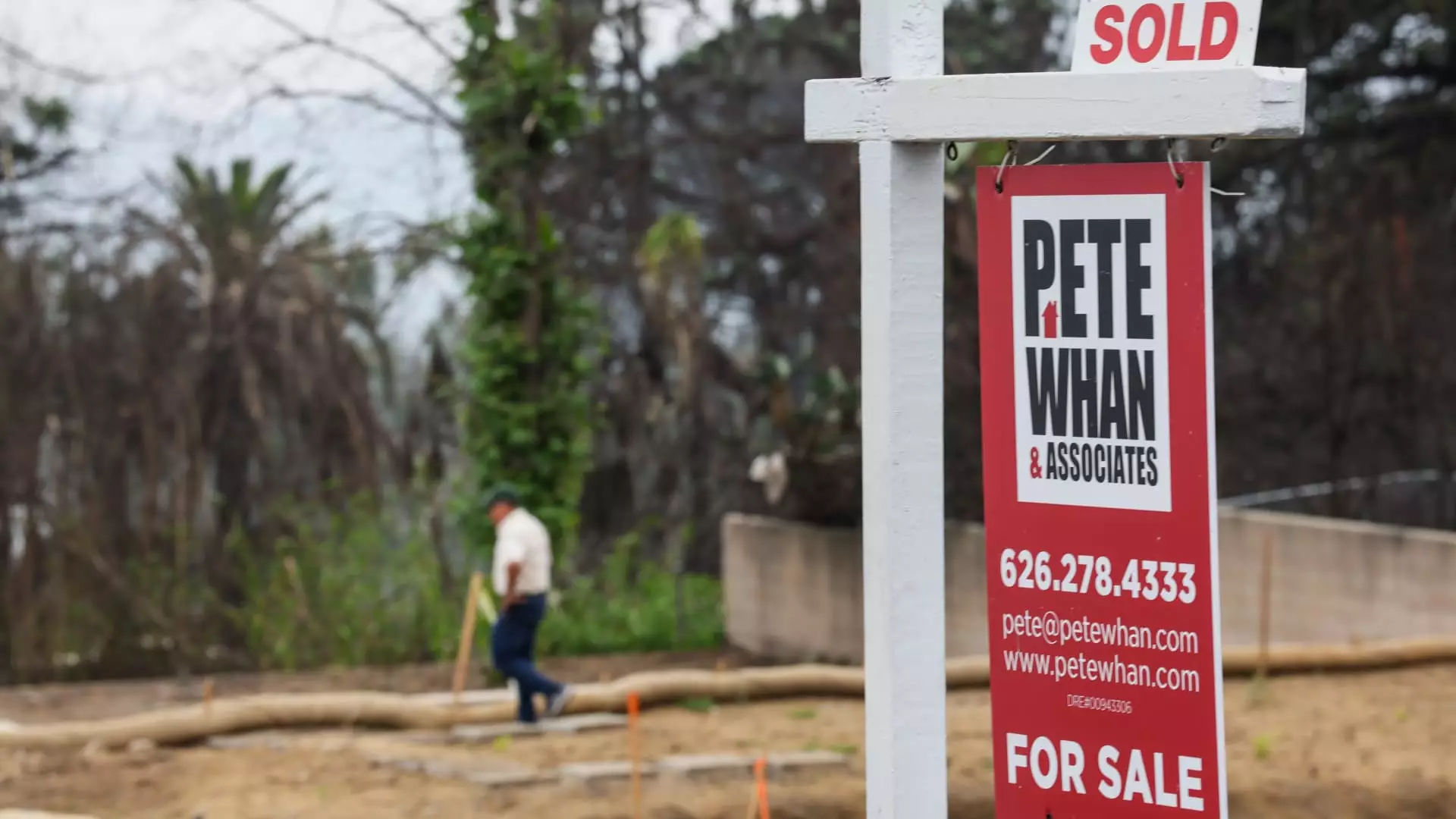Recent movements in the U.S. financial landscape reveal mounting concerns about tariffs and their ripple effects across the economy. Treasury yields, often viewed as a barometer for economic health, experienced an unsettling rise last week. This uptick, driven partly by renewed fears that tariffs may stifle growth, has sent ripples through mortgage markets, signaling underlying fragility. The immediate consequence? A sharp decline in mortgage application volume—down 10% in just one week—highlighting a chilling effect on homebuyers and refinancing activity alike.
While at first glance, mortgage rates nudged upward—climbing to 6.82% for 30-year conforming loans—the broader implication lies in the psychological and economic signals this movement sends. Elevated rates not only make borrowing more expensive but also reflect investor wariness, as markets digest the simmering trade tensions and tariffs that threaten to disrupt the economic stability that markets took for granted just months ago. These shifts unsettle consumer confidence, choking off demand in a market that was already cooling after a recent surge in inventory. Such dynamics threaten to create a vicious cycle, where higher borrowing costs dampen home sales, further depressing home prices and turning the housing market into a potential indicator of economic slowdown.
The Broader Economic Conundrum and Policy Implications
The implications stretch beyond the housing market, touching the core of economic vitality. The stagnation in mortgage activity—particularly a 12% drop in purchase applications—acts as a wake-up call for policymakers who might be tempted to dismiss these fluctuations as temporary. Yet, these declines suggest a deeper erosion of consumer optimism, fueled by inflationary pressures and trade policy uncertainty. Even the seemingly small movements—like mortgage rates rising despite slightly elevated inflation figures—mask a fragile equilibrium that can quickly tilt toward recession if tariffs continue to cast a long shadow.
Furthermore, mortgage refinancing—a traditional buffer in times of economic uncertainty—also faces contractions, with activity dropping 7% week-over-week. This decline signals waning household confidence, as borrowers become hesitant to lock in new rates amid volatile market conditions. The fact that jumbo loans are now more attractive than conventional ones for three consecutive weeks reveals a strategic shift in lender behavior, possibly aiming to capitalize on a longer-term view of market stability or growth.
Yet, the real danger lies in the intertwined nature of these trends. Elevated rates, driven by a complex mix of inflation fears and trade tensions, risk undermining consumer spending and housing investment. In a centrist liberal perspective, these developments highlight the urgent need for balanced policies—focused not only on controlling inflation but also on safeguarding economic growth through strategic diplomacy and cautious monetary measures. Policymakers must recognize that unchecked tariff wars threaten to dampen the very core engines of economic vitality—homeownership, consumer confidence, and market stability.

